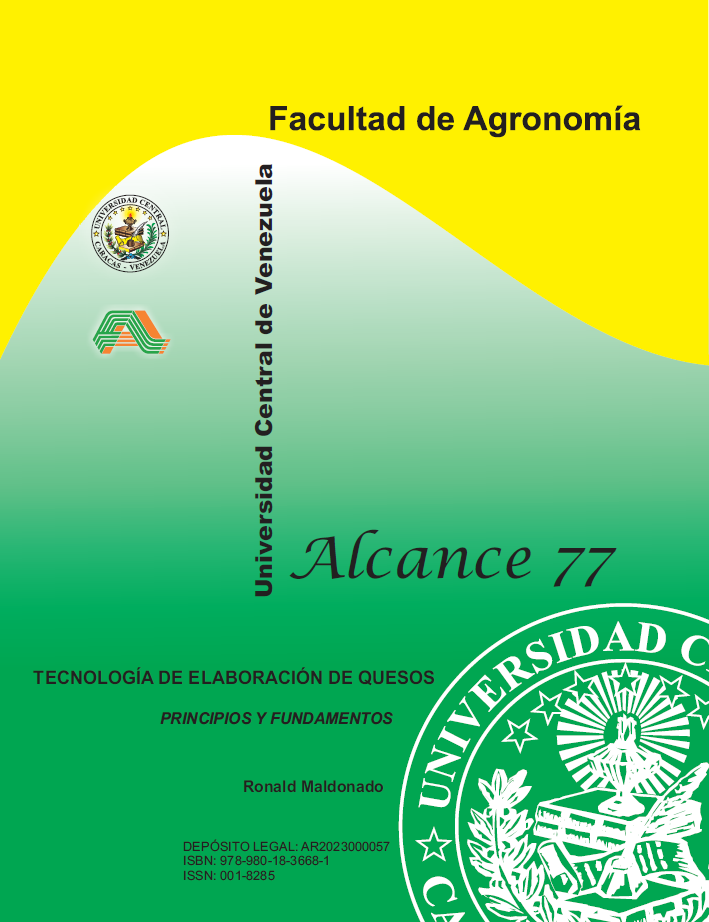FASE III. MADURACIÓN DE LOS QUESOS
Phase iii. CHEESE MATURATION
Resumen
La maduración, es una de las principales etapas del proceso de la elaboración de los quesos. En cierta forma, todos los quesos al finalizar el proceso de elaboración son muy parecidos, sin embargo, la diferenciación entre ellos se logra en la etapa de maduración a nivel de cava. El objetivo de este capítulo es analizar la etapa de maduración de los quesos, principios, características, tipos y el control físico y bioquímico en el curso de la maduración en los quesos. La principal contribución de este capítulo es realizar un cuadro resumen de los parámetros operacionales que afectan el control bioquímico y físico en el trascurso de la maduración en quesos representativos (queso Camembert, Gouda y Pecorino). La maduración de los quesos, se inicia en la premaduración de la leche antes de la etapa de coagulación de la leche. Luego, continúa en la etapa de cheddarización y prosigue en la cava de maduración. El control de la maduración se realiza en función del control bioquímico y control físico y, en ambos casos, va a depender del tiempo de maduración. El control bioquímico depende de la actividad de las BAL (Bacterias acido lácticas) y el control físico dependen del control de la humedad relativa y temperatura. La maduración a nivel de cava, se realiza con la finalidad de crear las condiciones de humedad relativa y temperatura necesarias para el ajuste de la humedad final en el queso, estimular los cambios bioquímicos en el queso como la acidificación, metabolismo de los citratos y lactatos, proteólisis de las proteínas y lipólisis de las grasas con el fin último de lograr las características, físico-químicas, microbiológicas, sensoriales y nutricionales que van a caracterizar a cada uno de los quesos que existen en el mundo.
ABSTRACT
Aging is one of the main stages of the cheesemaking process. In some ways, all the cheeses at the end of the cheesemaking process are very similar; however, the differentiation among them is achieved in the ripening process at the cave level. The goal of this chapter is to study the stage of maturation of cheeses, principles, characteristics, and types, as well as the physical and biochemical control of the course of the aging process. The main contribution of this chapter
is to make a summary table of the operational parameters that affect the biochemical and physical control in representative cheeses such as Camembert, Gouda, and Pecorino cheese. The maturation of cheeses begins at the pre-ripening of milk before the milk coagulation stage. Then, it continues with the cheddaring stage and, after that, the maturation cellar. The ripening control is carried out according to the biochemical and physical control, and, in both cases, it will depend on the maturation time. Biochemical control depends on lactic acid bacteria (LAB) activity, whereas physical control is based on relative humidity and temperature control of the inner cellar. The maturation at the cava level is aimed at creating the conditions of relative humidity and temperature required to adjust the end moisture in the cheese; thus setting the conditions for biochemical changes of the cheese. Some changes, such as acidification, metabolism of
citrates and lactates, proteolysis of proteins, and lipolysis of fats, are formed at this stage. This will allow for achieving the physical-chemical, microbiological, sensory, and nutritional features characterizing each cheese marketed worldwide.


